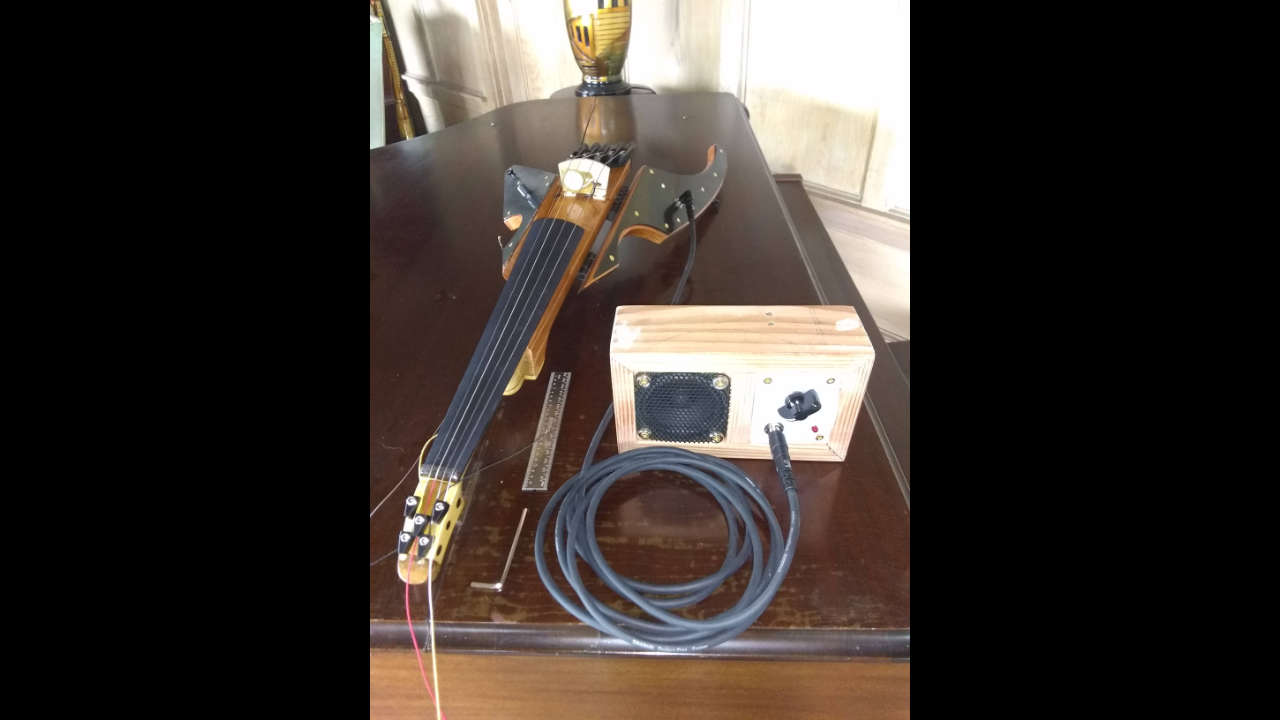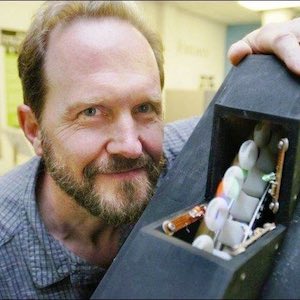Electroacoustic Polychord
A stringed instrument with feedback is formed from a plurality of very long music wires with custom-made, stereo pickup and driving transducers (that was the actual patentable improvement) located at opposite ends of the strings.
 The concept is that the string becomes a hybrid interface to an audio electronic controller. The string becomes extended into the electronics, but the musician has direct tactile contact with the controller. The first two incarnations were single-string "Monochords", but really a 4-string polychord would be more ideal and would require an 8-channel sound board and 8 channels of amplification to run it. Much more expensive than the original. The first incarnation was a student project. The second was a funded commission for New Music Chicago's 1985 Spring Festival. It was installed and performed at the State of Illinois at Chicago Building. At the end of the first installation, the instrument actually went into an unexpected uncontrolled, low-frequency self-oscillation that ripped the cones right off of the (borrowed - Yikes!) PA speakers I was using. So, I think that some further experiments in amplitude-limiting in the audio chin might also be called for this go-round. The first incarnation looked good, but was not acoustically ideal. The second incarnation was acoustically better, but not as sturdy as the first version. A third installation will look better, be more robust and have great acoustical properties. The first installation was in 1979. The second, as I said was 1985. It was a few months to construct a new version of the instrument each time. The first instrument was made of wood. The second was plastic and aluminum. I use tools.
The concept is that the string becomes a hybrid interface to an audio electronic controller. The string becomes extended into the electronics, but the musician has direct tactile contact with the controller. The first two incarnations were single-string "Monochords", but really a 4-string polychord would be more ideal and would require an 8-channel sound board and 8 channels of amplification to run it. Much more expensive than the original. The first incarnation was a student project. The second was a funded commission for New Music Chicago's 1985 Spring Festival. It was installed and performed at the State of Illinois at Chicago Building. At the end of the first installation, the instrument actually went into an unexpected uncontrolled, low-frequency self-oscillation that ripped the cones right off of the (borrowed - Yikes!) PA speakers I was using. So, I think that some further experiments in amplitude-limiting in the audio chin might also be called for this go-round. The first incarnation looked good, but was not acoustically ideal. The second incarnation was acoustically better, but not as sturdy as the first version. A third installation will look better, be more robust and have great acoustical properties. The first installation was in 1979. The second, as I said was 1985. It was a few months to construct a new version of the instrument each time. The first instrument was made of wood. The second was plastic and aluminum. I use tools.
Guitar E-string is nearly invisible stretched through the air -- e.g., Music Wire. One of the student stage hands walked through the string the afternoon of the concert and knocked over the driving transducer half of the instrument breaking the bridge. I had to run home and repair it the afternoon of the debut concert. Six years later, the instrument was stretched vertically which kept the string out of potential traffic. That's important.
